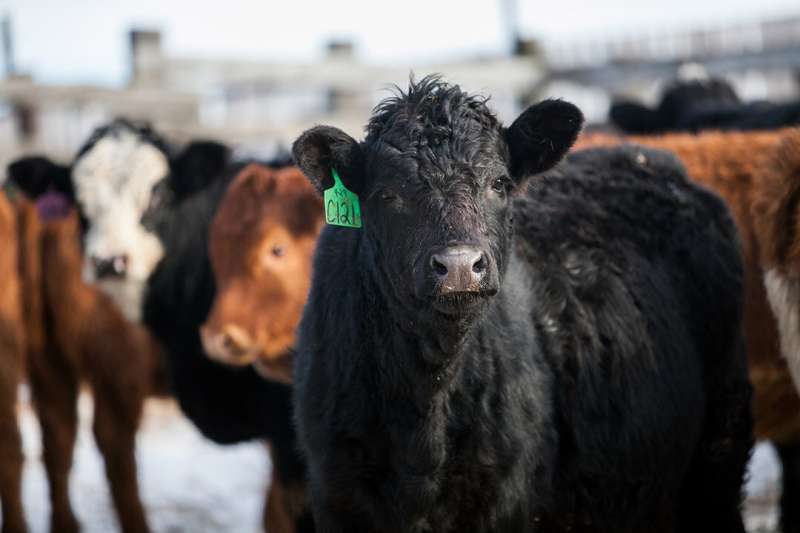This article has been reviewed according to Science X's editorial process and policies. Editors have highlighted the following attributes while ensuring the content's credibility:
fact-checked
peer-reviewed publication
trusted source
proofread
Researchers discover new antimicrobial resistance gene associated with livestock disease treatment

Researchers at the University of Saskatchewan (USask) have discovered how a previously overlooked gene is involved in antimicrobial resistance—a growing global issue that threatens the health and welfare of both humans and animals.
The gene encodes for an enzyme named EstT and is capable of "turning off" or inactivating macrolides, a class of antibiotic drugs commonly used to treat disease in cattle and other livestock.
The researchers' findings were published online last week in Proceedings of the National Academy of Sciences (PNAS).
Tylosin, tilmicosin and tildipirosin are some antibiotics classed as macrolides. Veterinarians rely on these drugs to treat illnesses in cattle such as bovine respiratory disease and liver abscesses as well as other diseases in livestock and companion animals.
With this discovery, veterinarians will know "there's a possibility that the drug will not work because of the presence of the gene," said Dr. Poonam Dhindwal (Ph.D.) the paper's lead author and a post-doctoral fellow at the Western College of Veterinary Medicine (WCVM).
Antibiotics are becoming less effective due to the global spread of antimicrobial resistance. Based on 2019 estimates, more than 1.2 million human deaths were caused by drug-resistant infections. Antimicrobial resistance genes (ARGs)—mobile genetic elements that can pass between micro-organisms—help to accelerate resistance.
The USask research team, led by WCVM assistant professor Dr. Tony Ruzzini (Ph.D.) and in collaboration with Dr. Murray Jelinski (DVM), made the discovery after analyzing bacteria collected from watering bowls at a western Canadian beef cattle feedlot.
"[Our discovery] adds one more piece to the puzzle," said Jelinski, a professor of large animal clinical sciences and the Alberta Chair in Beef Cattle Health at the veterinary college.
Ruzzini said scientists have previously identified the existence of this gene that's commonly found in many animal pathogens and their microbiomes, but its purpose remained a mystery. What the USask research team discovered is that this gene can break the ring structure of the antibiotic through hydrolysis (chemical reaction caused by water).
"If you break the ring or you open the ring with water, then you disrupt the active shape of the antibiotic. So, it no longer has a high affinity for the target," said Ruzzini.
He added that once the gene destroys the antibiotic's structure, the drug is no longer able to work as effectively in treating an illness: "Inactivation is concerning because it reduces the effective amount of antibiotics that are being delivered during an infection."
Ruzzini said his team found the gene in a cluster with three other ARGs—the first clue that it could be involved in antimicrobial resistance. Once the team identified the gene, team members worked to clone it and test it against a panel of many antibiotic drugs from different classes.
"This gene, even though we found it in an environmental organism, it is also present in pathogens that are responsible for causing bovine respiratory disease (BRD)," said Ruzzini. His lab has conducted numerous studies investigating BRD, which is commonly known as shipping fever.
Jelinski said the team's work should be of interest to all researchers in both human and animal health fields who are studying antimicrobial resistance.
"Our finding adds to the considerable database of ARGs, which can be crossmatched to a bacteria's DNA to determine if the bacterium has the potential to be resistant to a particular antimicrobial," said Jelinski.
Ruzzini added that his research team is continuing to learn more about how EstT works.
"As AMR surveillance systems rely more on molecular tools for detection, our knowledge of this specific gene and its integration into those systems will help to better inform antimicrobial use," said Ruzzini.
More information: Poonam Dhindwal et al, A neglected and emerging antimicrobial resistance gene encodes for a serine-dependent macrolide esterase, Proceedings of the National Academy of Sciences (2023). DOI: 10.1073/pnas.2219827120
Journal information: Proceedings of the National Academy of Sciences
Provided by University of Saskatchewan





















